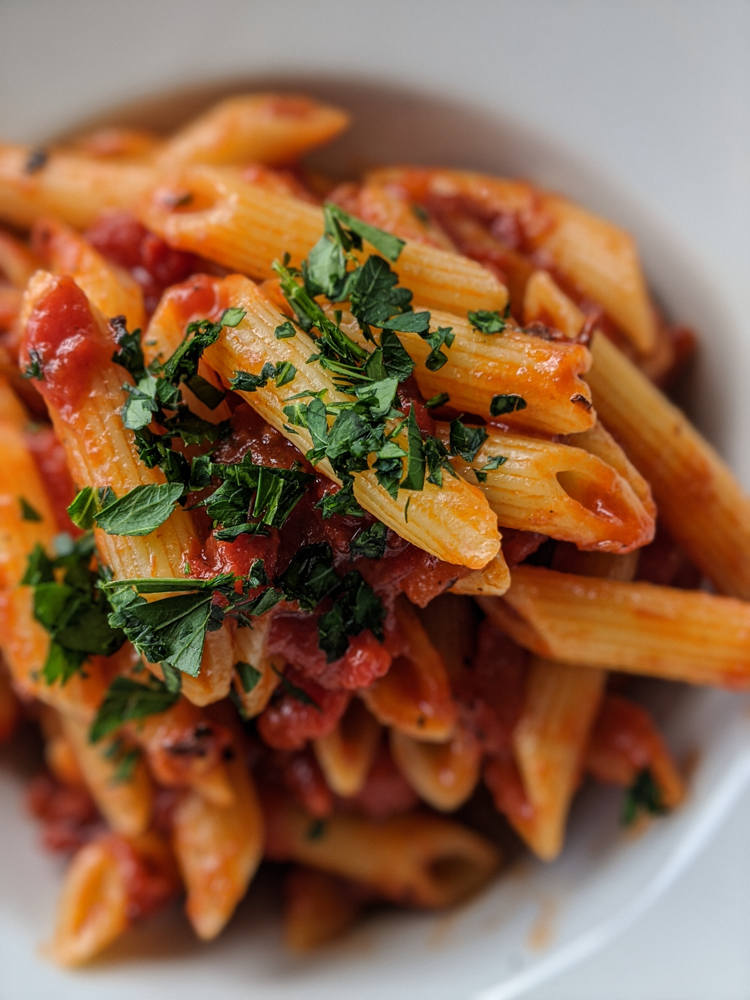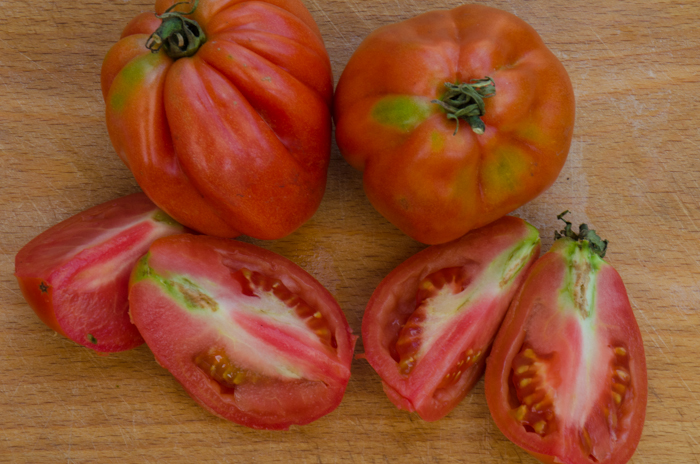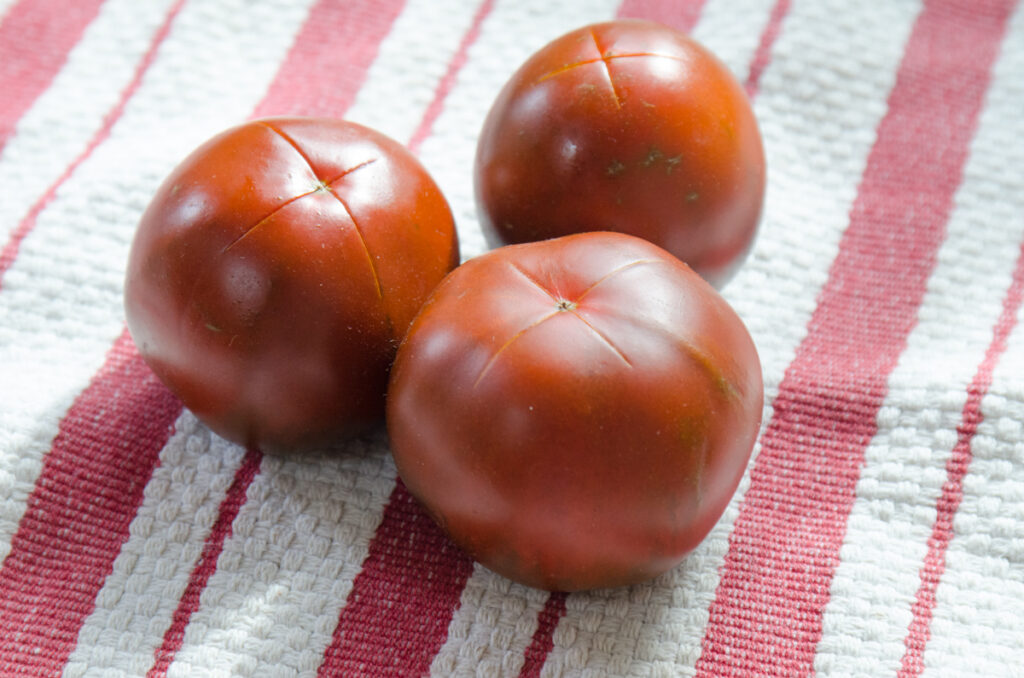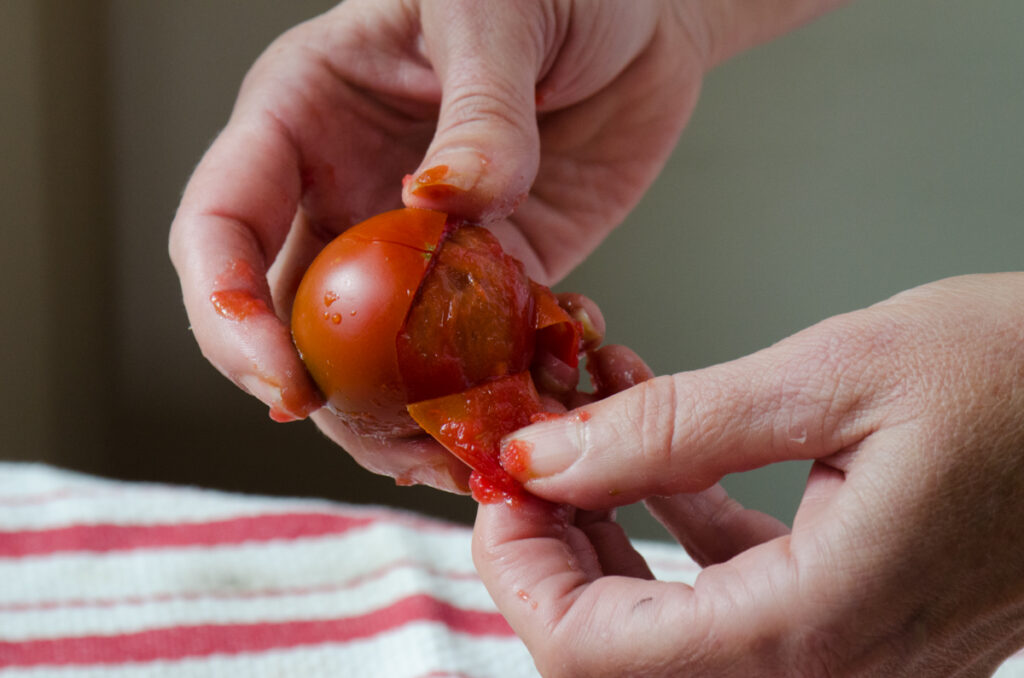
A popular pasta dish from Rome and the Lazio region is the simple but tasty Sugo all’Arrabbiata. The name “Arrabbiata” comes from the Italian word for angry, referring to the red face one would get as a result of eating this spicy pasta. But certainly as the chef, you are in control of how spicy you make this dish, and having whipped up a wonderful meal with very little effort, anger will be far from your mind.

Arrabbiata sauce is of relatively recent origin, some suggest from the late 1800s or early 1900s. Now we think of tomatoes as a traditional ingredient of Italian cuisine, but in fact the plant is not native to Italy, or to Europe for that matter. Tomatoes originated in South America, the name “tomato” coming from the Aztec word for the plant, “tomatl.” Tomatoes found their way to Europe following the conquest of the Aztecs by Cortes, as colonists sent home samples of this strange new plant. Tomatoes reached Italy in 1548, but it took hundreds of years for them to become a commonplace ingredient in the Italian diet. Dishes with dried pasta and canned tomatoes – which many recipes for Arrabbiata use – weren’t really popular until the 1950s or 1960s. But by the 1970s this dish had become a staple of Roman cuisine, featured prominently in two films of that era, Marco Ferreri’s La Grande Bouffe and Federico Fellini’s Roma.
Ingredients for your authentic Sugo all’Arrabbiata:
Tomatoes:
You can use fresh tomatoes when in season and tasty, or canned diced tomatoes when not. San Marzano canned tomatoes would be the favorite choice in Italy, but any good canned diced tomato will do.

Fresh tomatoes will be nicer if peeled and seeded. With a sharp knife, cut an X just through the outer skin on the bottom of each tomato. Immerse the whole tomatoes in boiling water for about 1 minute. You should see the skin around each X begin to pull back; remove the tomatoes from the water and peel off the skin. Cut the tomatoes open, push the seeds out with your thumb and discard. Cut the remaining pulp into 1/2 inch chunks.

Hot Chili Peppers:
Recipes vary as to using fresh or dried; use fresh if available, but still great with dried.
Extra Virgin Olive Oil:
Use a generous amount. You are flavoring it with garlic and hot red peppers, so it doesn’t need to be the highest quality, but it provides nice mouthfeel and balance to the acidity of the tomaotes, so you want to use more than just enough to coat your saute pan.
Garlic:
Adjust amount according to your taste.
Cheese:
Grated pecorino is the traditional choice. A hard grated cheese can substitute.
Pasta:
Penne is the traditional shape of choice. Other short pastas like ziti or rigatoni would substitute nicely.
Wines from Lazio region to pair with your Arrabbiata would be Est! Est!! Est!!! di Montefiascone, a white blend of Malvasia and Trebbiano or a red Cesanese, an indigenous varietal dating back to Roman times.

Penne all’Arrabbiata
Serves 4 as a main course, or 6 as an appetizer
6 tablespoons extra virgin olive oil
2 cloves garlic, peeled
1/2 fresh red chile, seeded and minced OR 1/2 teaspoon dried hot red pepper flakes
1-28 ounce can diced tomatoes OR 4 fresh tomatoes, peeled, seeded and diced
1 pound penne pasta
1 tablespoon fresh flat leaf parsley, minced
Heat the olive oil in a large saute pan over medium heat. Add the garlic cloves and red pepper, cook until the garlic browns. Remove cloves from oil and discard them.
Add the tomatoes to the saute pan and simmer for about 15 minutes.
Bring a large pot of water to boil over high heat. Salt water generously. Add the penne and cook until al dente, with still a bit of resistance when you bite into one. Drain the penne, reserving about a cup of the cooking water. Add the penne to the tomatoes, tossing to combine. Add a little of the pasta water to the tomato sauce if it seems too thick to coat the penne well.
Season with salt, sprinkle with the parsley and serve with grated pecorino cheese.
